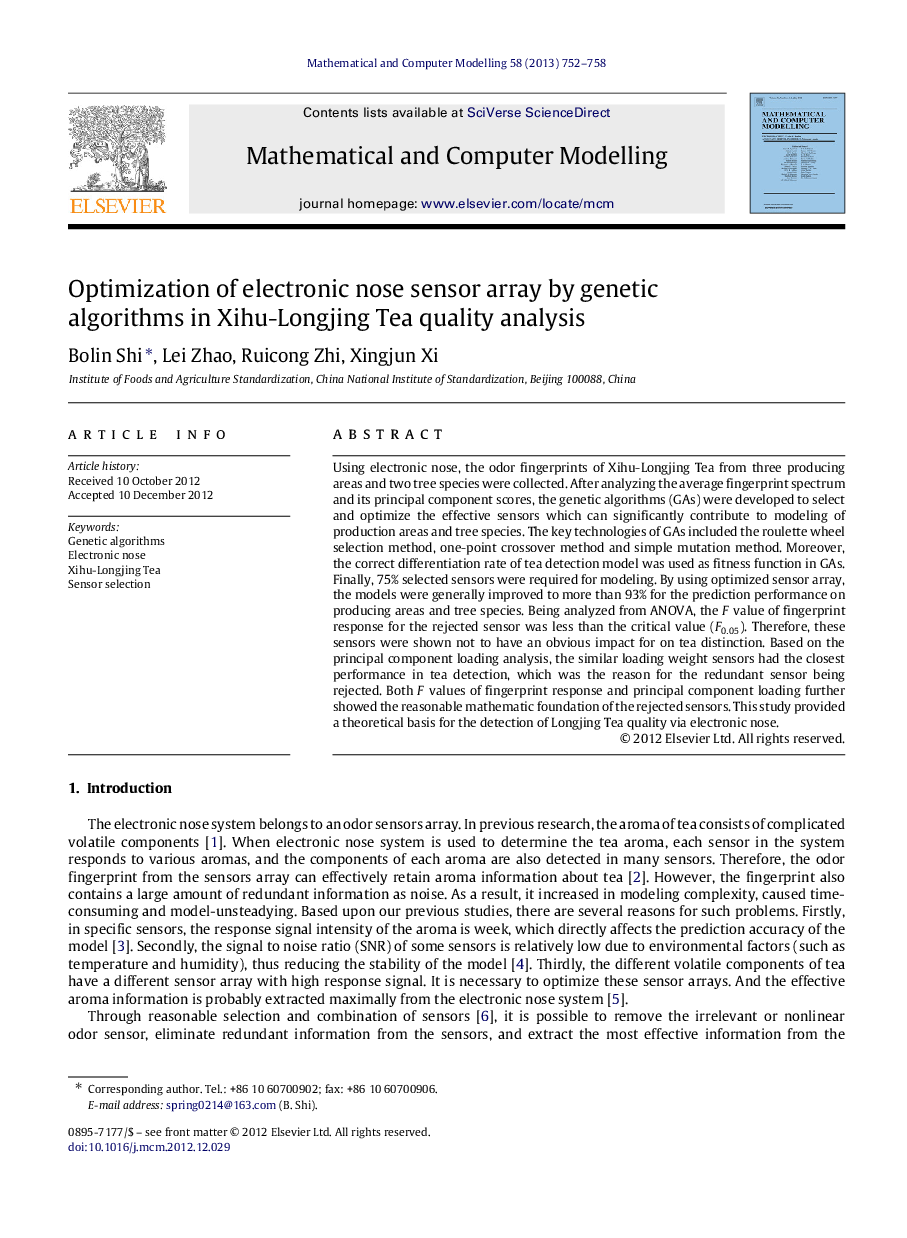| کد مقاله | کد نشریه | سال انتشار | مقاله انگلیسی | نسخه تمام متن |
|---|---|---|---|---|
| 1137999 | 1489131 | 2013 | 7 صفحه PDF | دانلود رایگان |

Using electronic nose, the odor fingerprints of Xihu-Longjing Tea from three producing areas and two tree species were collected. After analyzing the average fingerprint spectrum and its principal component scores, the genetic algorithms (GAs) were developed to select and optimize the effective sensors which can significantly contribute to modeling of production areas and tree species. The key technologies of GAs included the roulette wheel selection method, one-point crossover method and simple mutation method. Moreover, the correct differentiation rate of tea detection model was used as fitness function in GAs. Finally, 75% selected sensors were required for modeling. By using optimized sensor array, the models were generally improved to more than 93% for the prediction performance on producing areas and tree species. Being analyzed from ANOVA, the FF value of fingerprint response for the rejected sensor was less than the critical value (F0.05F0.05). Therefore, these sensors were shown not to have an obvious impact for on tea distinction. Based on the principal component loading analysis, the similar loading weight sensors had the closest performance in tea detection, which was the reason for the redundant sensor being rejected. Both FF values of fingerprint response and principal component loading further showed the reasonable mathematic foundation of the rejected sensors. This study provided a theoretical basis for the detection of Longjing Tea quality via electronic nose.
► The genetic algorithms (GAs) were developed to select and optimize the electronic nose sensors.
► 75% of selected sensors were required for Xihu-Longjing Tea producing areas and tree species modeling.
► Being analyzed from ANOVA, the FF value of fingerprint response for the rejected sensor was less than the critical value (F0.05F0.05).
► Based on the principal component loading analysis, the similar loading weight sensors had the closest performance in tea detection.
Journal: Mathematical and Computer Modelling - Volume 58, Issues 3–4, August 2013, Pages 752–758